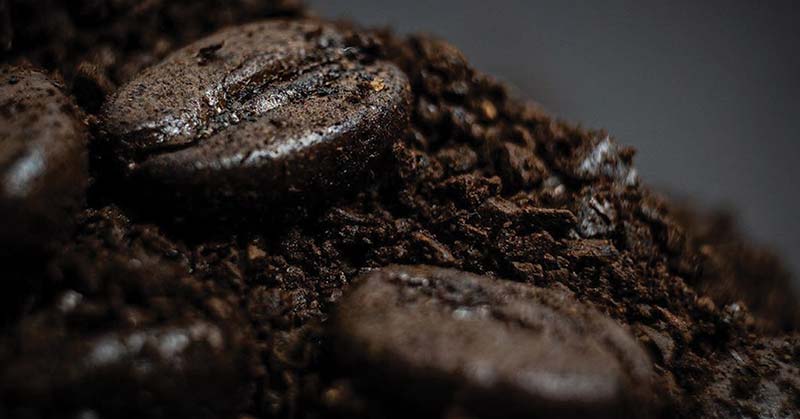Coffee is a beloved beverage enjoyed by millions around the world. Beyond its invigorating taste and aroma, coffee grounds, the by-product of your morning brew, can play an unexpected yet significant role in your garden.
Yes, you read that right – your used coffee grounds are not just waste but a treasure trove for your compost and garden!
In this blog post, we’ll explore how to compost coffee grounds effectively, enhancing the health and fertility of your soil.
Why Coffee Grounds are Great for Composting
Coffee grounds are a fantastic addition to the compost pile. Here’s why:
- Rich in Nutrients: Coffee grounds are a good source of nitrogen, an essential nutrient that aids in plant growth. They contain about 2% nitrogen by volume.
- Balanced Composition: Besides nitrogen, coffee grounds include potassium, phosphorus, and micronutrients beneficial to plant growth.
- Improves Soil Structure: When added to compost, coffee grounds help create a rich, organic material that improves soil structure, drainage, and water retention.
- Worm-Friendly: Earthworms love coffee grounds! They help break down the grounds, enriching the compost even further.
Step-by-Step Guide to Composting Coffee Grounds
Step 1: Collect Your Coffee Grounds
Start by collecting your used coffee grounds. You can store them in a container near your coffee machine for convenience. Remember, a little goes a long way, so daily collection from your morning coffee routine is a great start.
Step 2: Create the Right Compost Mix
For effective composting, balance the greens (nitrogen-rich materials) and browns (carbon-rich materials) in your compost bin. Coffee grounds are considered green material. Balance them with brown materials like dry leaves, straw, or shredded newspaper to maintain a healthy compost mix.
Step 3: Add to Your Compost
Periodically add your collected coffee grounds to your compost bin. Layer the grounds with brown materials to prevent clumping and ensure a good air and moisture balance.
Step 4: Regular Compost Maintenance
Turn your compost regularly to aerate it and speed up the composting process. Keep your compost moist, but not wet, to foster the right environment for decomposition.
Step 5: Monitor Your Compost
Watch for a rich, dark color and earthy smell. If your compost seems too wet or smells unpleasant, add more brown materials to balance it out.
Tips and Considerations
- Moderation is Key: While coffee grounds are beneficial, they should only make up about 20% of your compost material. Too much can lead to a nitrogen imbalance.
- Paper Coffee Filters: If you use paper filters, you can compost them along with the grounds. They are a good source of carbon.
- Avoid Flavored Coffees: Try to use plain, unflavored coffee grounds as flavored ones might contain additives that are not beneficial for compost.
- pH Concerns: Used coffee grounds are generally neutral in pH, so they shouldn’t significantly alter the acidity of your soil. However, it’s always good to monitor the pH level of your compost if you’re adding a substantial amount of coffee grounds over time.
Conclusion
Composting coffee grounds is a simple, yet effective way to recycle a common kitchen waste product while enriching your garden soil. By following these steps and tips, you can turn your morning coffee ritual into a sustainable practice that benefits your garden and the environment.
FAQs on How to Compost Coffee Grounds
Q: Can I compost coffee grounds directly in my garden without a compost bin?
A: Yes, you can spread coffee grounds directly in your garden, but it’s best to mix them into the soil or layer them under mulch. Avoid dumping large amounts in one spot, as they can clump and create a barrier to water and air movement.
Q: Do coffee grounds make the soil more acidic?
A: Used coffee grounds are generally close to neutral in pH, so they don’t significantly alter soil acidity. Fresh, unused coffee grounds can be more acidic.
Q: How much of my compost pile can be made up of coffee grounds?
A: Coffee grounds should not exceed 20% of the total volume of your compost material. Balance them with carbon-rich “browns” like dry leaves or shredded paper.
Q: Can I compost the paper filters used with coffee grounds?
A: Yes, paper coffee filters can be composted along with the grounds. They are a good source of carbon and break down easily in a compost pile.
Q: Are there any types of coffee grounds I should avoid composting?
A: It’s best to avoid composting flavored coffee grounds, as they might contain additives and oils that aren’t beneficial for compost or soil.
Q: How often should I add coffee grounds to my compost bin?
A: You can add coffee grounds as often as you generate them, but remember to maintain the balance with brown materials and turn the compost regularly.
Q: Do I need to dry out coffee grounds before adding them to compost?
A: No, you don’t need to dry coffee grounds before composting. Their moisture can be beneficial, but ensure your compost remains balanced and not overly wet.
Q: Can worms in vermicomposting bins process coffee grounds?
A: Yes, worms in vermicomposting systems can process coffee grounds. They are actually beneficial for worm bins, but should be added in moderation.
Q: How will I know if I’ve added too many coffee grounds to my compost?
A: If you’ve added too many coffee grounds, your compost might become too wet, dense, or might emit an unpleasant odor. If this happens, add more brown materials and turn the compost to improve aeration.
Q: Can using compost made with coffee grounds benefit all types of plants?
A: Compost made with coffee grounds is generally beneficial for most plants, as it adds organic matter and nutrients to the soil. However, be mindful of specific plants’ soil pH and nutrient requirements.




